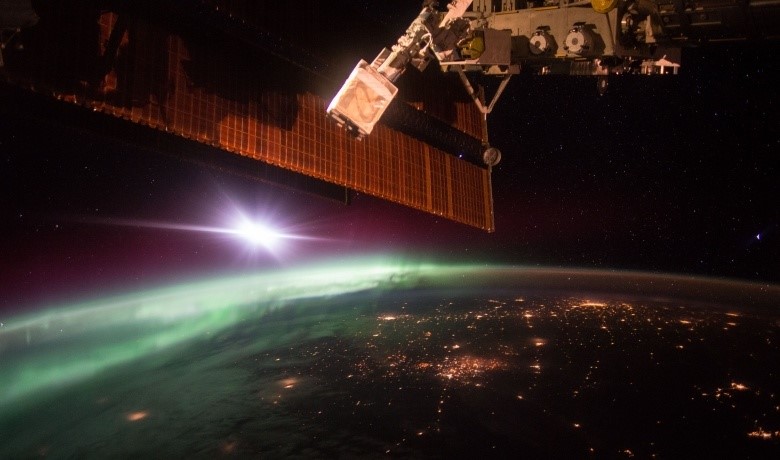The time is approaching when Western democratic leaders may need to initiate a discussion of what an acceptable “new Russia” will look like in the coming years. Those versed in the geopolitical history of the Russian empire will recognize a picture that is emerging this week in the zones of conflict inside Ukraine. Vladimir Putin’s “special military operation” is active in areas of the country that, if successfully added to the modern Russian Federation, will resemble the territorial boundaries of the Russian Empire. President Vladimir Putin is proving himself to be a modern-day Czar whose stated war aims include threats of nuclear confrontation if anyone opposes his territorial ambitions. The term “new Russia” was used when the Donbas region and the territory along the Azov and Black Seas were part of the Empire. The Russian president has long spoken of revitalizing the glory of the Empire. Recent statements by Putin and other high-ranked government officials in Moscow this week appear to indicate that the Russian president is willing to secure his vision with the use of nuclear weapons.
Despite the massive failure of Russian forces to take Kyiv and northern Ukraine, soldiers are regrouping for new offensives in the south and eastern portions of Ukraine. These regions are Russian speaking areas that were conquered by the Empire in the late 18th century. Three hundred years ago Russia recognized the value of holding land along the Black Sea. “During the reign of Catherine the Great, Russian settlers colonized the area, and new cities were founded to cement Russian rule there. Several of those towns, such as Mariupol and Kherson, have seen brutal fighting during Russia’s most recent invasion. The Donbass… became a major industrial center for the Russian Empire and beyond,” according to Hayden Daniel writing in The Daily Caller.
If Putin has determined he cannot conquer all of Ukraine, he could revamp his plans and potentially achieve his objective by taking only the area along the Black Sea coast down to the city of Odessa. A revitalized “new Russia” could provide the buffer zone Putin says he is seeking to separate his country from that of NATO Members. What is he willing to do to achieve it? Second, Putin argues that he wants to protect Russian speakers inside Ukrainian territory. About 70% of the population in eastern Ukraine, in the Donetsk People’s Republic and the Luhansk People’s Republic, speak Russian. The front lines of the conflict in the south and east are starting to match up with the areas containing a majority who speak Russian as their primary language.
After the 2014 conflict in Crimea, separatists proclaimed The Federal State of New Russia. Putin may decide, since the war is not going well for him, that taking these areas along the Black Sea and declaring them part of “New Russia” will be enough to rehabilitate himself in the eyes of the Russian people. A peace treaty could end up ceding New Russia to Putin as either a puppet state or reincorporate it into Russia itself. If this is the least acceptable outcome for Putin, the question becomes — what is the Russian President willing to achieve it? He escalated the threat level with his rhetoric recently when he warned the US and NATO not to interfere with his special military operation or risk nuclear confrontation. This is not new to Russian military minds. Last fall a former member of the Russian Security Council, Andrei Kokoshin, along with Aleksandr Shlyakhturov who served as former head of the Main Intelligence Directorate of the General Staff, wrote an article on nuclear deterrence and escalation in which they stated “The core of convincing strategic deterrence in Russia’s national security policy has been and remains a demonstration of the ability, under any—[even] the most unfavorable— conditions to carry out a retaliatory [nuclear] strike with catastrophic consequences for the aggressor… Political-military deterrence may also be accompanied by the threat of other harsh political and economic measures against the ‘opponent’ even before the threshold of the use of the Armed Forces. Many theorists and practitioners of deterrence have rightly noted and continue to note that for effective deterrence, the threat must look plausible. At the same time, the credibility of such a threat depends on the risks and costs that the deterrent may have in demonstrating such a threat”” Roger McDermott, of the Jamestown Foundation, points out this week that “This has been at play since February 24.”
The Russian authors suggest that as Russia moves up the nuclear ladder toward a launch, the options not to use a nuclear weapon narrow and the level becomes one where “one or more parties begin to consider the practical possibility of using nuclear weapons.” They also suggest that once a nuclear launch is considered it is very difficult for Russia to de-escalate the situation since doing so could lead to an expanded conventional war. If the US and the West enter the conflict and Putin views nuclear confrontation as his only means to achieve a limited objective in recreating “New Russia,” the world may be looking at a direct nuclear clash. While Russia still has many avenues left to avoid using a nuclear weapon, the West must be prepared as Putin has stated that his philosophy is like that of a rat he once saw trapped in a corner as a child – it was willing fight until its own the death. He is like that rat.
Daria Novak served in the U.S. State Dept. and teaches at a major university.
Illustration: Russian ASAT test (Leiber Institute, West Point)
